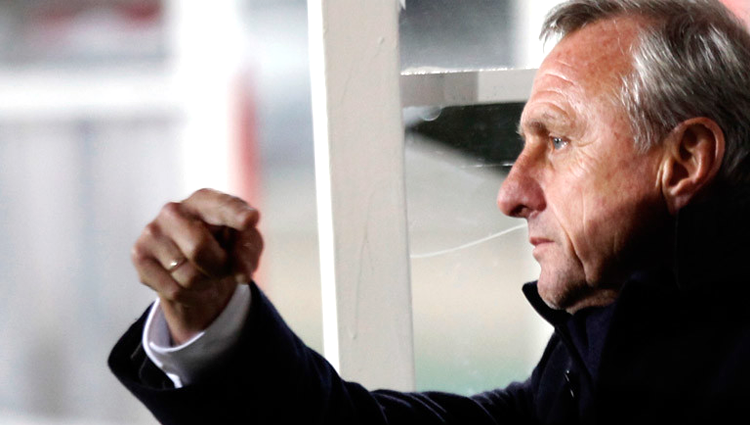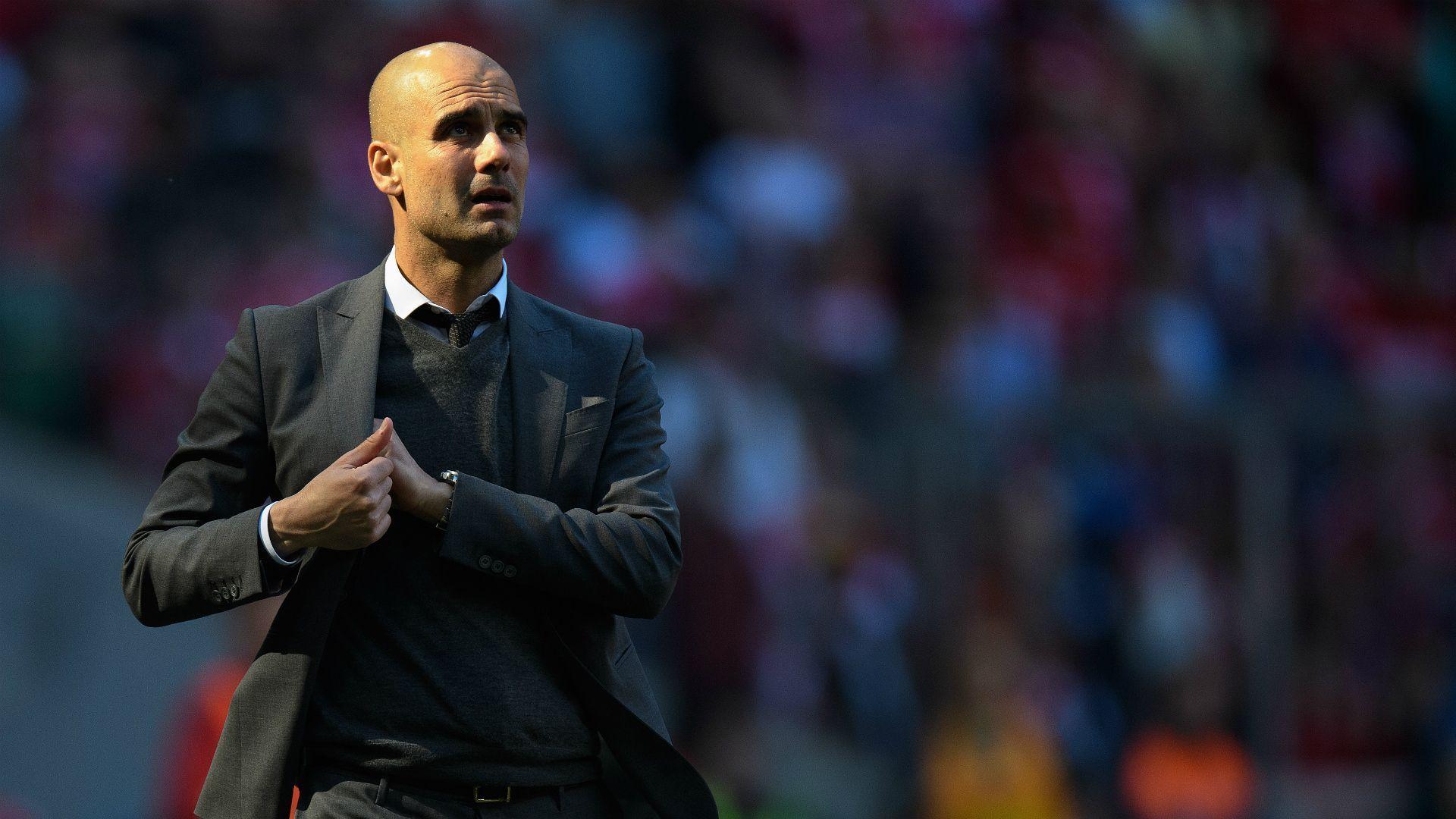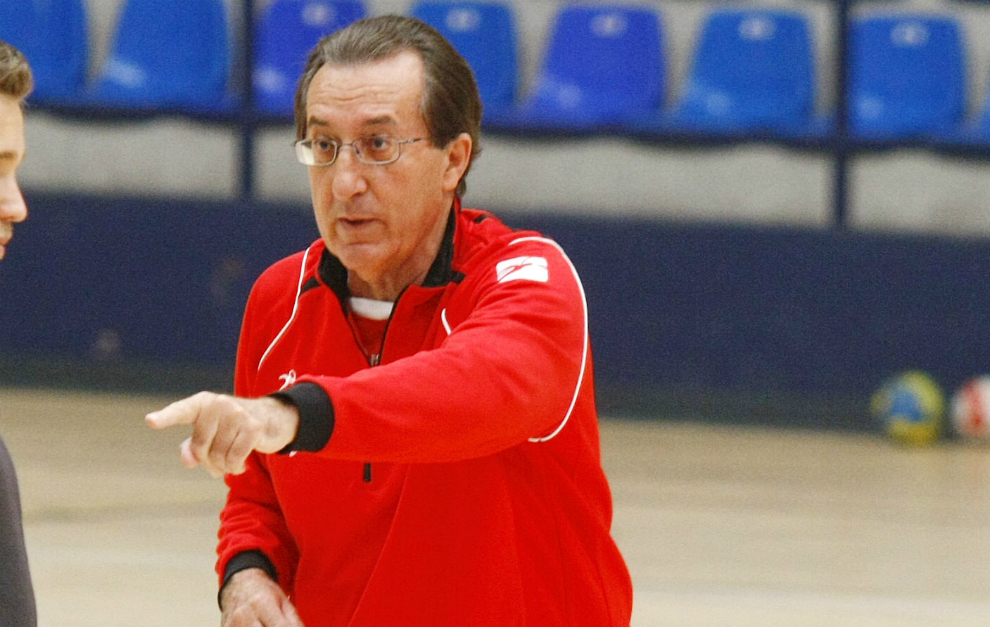Weak points or holes in the opponent’s position must be occupied by pieces, not pawns.”
– Siegbert Tarrasch
Known as “Giochi di Posizione” to the Italians and “Positiespel” to the Dutch. Juego de Posicion literally translates in English to “Positional Play.” It is a philosophy of football, based on certain principles; the fundamental one being to gain superiority over the opposition. In the words of Marti Pernau, “Positional Play does not consist of passing the ball horizontally, but something much more difficult: it consists of generating superiorities behind each line of pressure. It can be done more or less quickly, more or less vertically, more or less grouped, but the only thing that should be maintained at all times is the pursuit of superiority. Or to put it another way: create free men between the lines.”

Johan Cruyff
In the words of Paco Seirul-Lo; “There’s numerical, positional, and qualitative superiority. Not all 1 vs. 1’s are a situation of equality”
Basically, a team can acquire superiority of 4 types:
- Numerical Superiority: Where the number of players who can take part in the immediate action of the game is greater than the number of players the opponent has for the same purpose.
Every team progresses the ball through their own defensive third, the middle third and then the attacking third, and the idea is that, to have one man more than the opposition lends he team an advantage in that zone.
A football field is divided into 3 zones, the defensive third, the middle third and the attacking third. A team can always have numerical superiority in their own defensive third, irrespective of how many players the opposition presses with. This is due to a single factor, the goal-keeper. The opposition can never press with their goal-keeper, meaning a team utilizing its goal-keeper in build-up will always have a numerical advantage.

Situations of Numerical Superiority with the Goal-Keeper in Build up
The reverse is applicable in the attacking third, that is, the opposition will always have one player more to play with. Now, assuming we allot 1 point for each one player more than the opposition in a particular zone, we would have a net total of zero from each extreme third. The idea of numerical superiority could in a sense be put down to the ability of the team to generate numerical advantages in the midfield. Pep Guardiola’s False 9 or inverted full backs, Ricardo Lavolpe’s La Salida Lavolpiana, are all systems that help a team exercise numerical superiority.
2. Positional Superiority: Positional superiority broadly has two aims;
- Maximising options for one’s own teammates
- Minimising options for the opposition.
Essentially, it is possible to be positioned “well”, but not in the right position. Football is a game of continuous events based on a cause-effect relationship, or in other words, the immediately preceding actions by a team decide it’s current position or situation, and its current actions create new future circumstances.
So, to be in a good position, one where upon receiving the ball the player could create a chance, serves no benefit if his teammate cannot immediately access him. A player’s actions must be put in relation with continuous actions around him to be judged beneficial or not; and the entire team should be positioned in such a sense that they are prepared to defend while attacking; and prepared to attack while in defence. As Arrigo Sacchi noted, “Our players had four reference points: the ball, the space, the opponent, and their own teammates. Every movement had to happen in relation to these reference points. Each player had to decide which of these reference points should determine his movements.”
3. Qualitative Superiority: Qualitative Superiority can be created in 2 ways;
- Getting the ball to the team’s best players in optimum positions with space and time
- Targeting the opposition’s weakest players by isolating him into 1v2 or 1v1 situations.
Qualitative superiority is not just an attacking tool however. Meticulously executed pressing traps can help a team coerce its opponent to feed the ball more often to a particular player who is less composed with the ball at his feet, while cutting off players with better technical ability, In the words of Johan Cruyff, “We must make sure their worst players get the ball the most. You’ll get it back in no time.”
4. Socio-Affective Superiority: Described first by Francisco Seirul-Lo, socio-affective superiority is more colloquially called “Team Chemistry”. It is the understanding the players share between each other, and their ability to interact with each other. Having players who know each other’s game better not only execute their brand of football better, but also gives the team an unpredictable edge in attack. Socio-affective superiority can be developed with specific training aimed at developing the understanding of players towards an integrated game model instead of splitting each model into smaller events and then specialising in those.
Three Primary Aspects of Juego De Posicion:
In the words of Albert Capellas: “The positional game is based on three pillars, the three Ps: position, possession and pressure“. Thierry Henry also noted that the 3 Ps of a Pep Guardiola side were “Possession, Position and Play”
Possession: Possession is not strictly a necessity for Juego de Posicion, but it is an indirect requirement. This is because the team that has the ball indirectly controls the playing field. It also serves as a defensive tool, as the team with the ball cannot concede a goal. In the words of Juanma Lillo, “There is no greater security than to have the ball.” The importance of possession is to get a team’s own players to ideal positions, and manipulate the opposition. In the words of Johan Cruyff, “If you have the ball, you must make the field as big as possible”. Further quoting Pep Guardiola, “The objective is to move the opponent, not the ball.” Keeping possession involves creating numerical superiority in numbers on a side of the pitch, inviting pressure, creating third man passing options and then switching the play to attack spaces. As Juanma Lillo notes, “The principle idea of Positional Play is that players pass the ball to each other in close spaces to be able to pass to a wide-open man.”
This creates certain conditions; The players must not be positioned too far apart from one another, so that they are adequately positioned to press in numbers in case they concede the ball, but at the same time not too close to one another to ensure the opponents have to cover more ground. The players must also maximise passing options, which is done by a concept commonly understood as “formation of triangles”. The basic idea is common, we need to pass the ball and to create maximum passing options, two players cannot occupy the same passing lane. In geometric terms, collinear points are points that lie on the same line, and any 3 non-collinear points on a plane form a triangle. Therefore, it is the necessity to pass that results in formation of triangles.
There always exists space on a football field, and the intention is to create those spaces in areas desirable to our team. As Cruyff said, “Possession for itself is worthless if you don’t know what do with the ball later. Possession creates space, but understanding creates purpose.”
The understanding here is that the goal of the team is to progress the ball through the three zones effectively. An attack is only good as it’s first line of progression. Effective possession should facilitate players to receive the ball and take a touch away from pressure and towards the opposition goal. Juanma Lillo said “Look for the 3rd man (free man) to be able to turn and face the play.”
Position: Albert Capellas noted “The position not only refers to the space we occupy on the field, but to the way we occupy that space: being well outlined. , scanning everything that happens around us before receiving, and so on. It is important to have a good position on the field and a good position of your body within that area depending on the ball and where you are.” Good position facilitates possession and pressing.

Albert Capellas
Pressing: Oscar Moreno said, “Provoke the proximity of the maximum number of opposition players around the ball. Recuperate the ball imminently when lost in spaces where we are united. Divide the play of rival team while not dissociating ours. All with the idea of having awareness of, during the prices of attacking, I am generating the futures conditions defensively or vice versa.” Immediately after possession is lost, the team attempts to win the ball back by pressing the opposition for the ball, cutting off passing opportunities and reducing the workload of the players in a sense. In the words of Johan Cruyff, “Do you know how Barcelona win the ball back so quickly? It’s because they don’t have to run back more than 10 metres as they never pass the ball more than 10 metres.” A belief Arrigo Sacchi further compounded, “in the defensive phase it means that you will burn less energy, because 10-metre runs don’t wear you out like 20-, 30-, 40-metre runs.”
/https://specials-images.forbesimg.com/imageserve/1052603618/0x0.jpg)
Juanma Lillo
It is fundamental to understand that for a functioning system, it is crucial to have all 3 of the following aspects, and understand their underlying interdependence and complementation.
As we have already noted, good positioning facilitates both better possession and better pressing. Oscar Cano presents the link between the first 2, “Every action implies the subsequent action for receiving the ball.” A sentiment that Johan Cruyff first expressed when he said, “In most scenarios it isn’t the man on the ball who decides where the ball goes, but the players without the ball.” Juanma Lillo further illustrates the necessity for a team as a cohesive unit to be positioned well to facilitate an effective press, in his interview in 2017 where he said, “It is what happens previously that permits you to win the ball back where you lost it. If you have not ‘travelled’ as a team with the ball, then you cannot win it the moment it is lost. If you are too far away from where you’ve lost it, you cannot go and press the opponent; you will have to make a big physical effort, and they will be able to make their decision calmly. Now if we as a team can go and together, there we can go press- and steal the ball. So, what determines if I can win the ball back, is what has happened before and until I win it.” In the same interview, Lillo also notes that “The best thing is to put those players who take the longest time to lose the ball, because that way, you do not have to run backwards.” In simpler terms,
- Good positioning facilitates effective ball retention and ball retrievement.
- Possession helps the team decide where it’s players can be positioned, and also manipulate the opposition
- Possession also helps the team travel the field as a unit, and cover spaces better while defending
- Pressing helps to regain the ball immediately upon losing it, thereby facilitating possession even better.
- Good positioning also reduces the distance required to be covered by the defending unit.
Now an important understanding we must arrive at here is the fluidity of the terms “attack” and “defence”.
The 3 P’s essentially serve as both an attacking and defensive utility. Johan Cruyff said” When you play on possession you don’t have to defend”, or in other words, “to score you must have the ball.” The basic implication here is that having possession serves a two-fold function. If we cross-examine, we discover that effective positioning and pressing accomplishes the very same goal. In other words, a system is flawed if it does not:
- prepare the team to defend immediately upon losing the ball
- prepare the team to attack immediately upon winning the ball

The Framework of Juego de Posicion:
Pep Guardiola is famously known to divide his football field differently than the traditional 18 zones:

Pep Guardiola’s Position Grid
The meticulous division and distinct emphasis on the half-spaces helps to impose a better sense of discipline among the players. However, there is a common misconception that Juego de Posicion is a rigid style of football allowing little in terms of flexibility of movement to the players. This belief is further compounded by the rigid systems of coaches like Antonio Conte and Louis Van Gaal whose styles of football contain certain similarities. However, the goal here is effective occupation of zones rather than a stringent set of commands where one player can occupy only one position. The idea remains constant: to create situations of superiority across the field. This would often require multiple players to step outside their assigned position and cluster a particular area of the field. Pep Guardiola’s sides themselves often this fluidity, and the division of the field remains fairly a blueprint to ensure positional discipline than a constitution to be adhered to the last letter.

Pep Guardiola
Training towards Positional Football:
Implementing possession football as a system is very difficult. Naturally, the goal of training sessions is to prepare the players for what they should do in the game. To help better understand what these aspects are that need to be stressed on during training, let us take a leaf out of the page out of Paco Seirul-Lo and his methods.
Here we have mentioned several times the importance of understanding the game as an integrated model and not actions in isolation. Juanma Lillo elucidates, “If you’re a great dribbler, but you don’t know when to dribble, you are not actually a great dribbler. People look at football in parts and modern coaches take things apart and then put them back together again. But that is unnatural. Without context we are not what we are. We are not a list of attributes. My aim is not to fracture and break apart things that should be together, not to decontextualise them.” Instead of working on agility, fitness and speed away from the game, such aspects were incorporated into training sessions to the maximum possible extent. Johan Cruyff said “It is not a question of how much you run, but where you run to”. Seirul-Lo focused his training sessions to develop players’ intellectual and their psychological capacity, improve their understanding of their game. As compared to methods like Tactical Periodisation preferred by Jose Mourinho, where the training sessions developed a structured playing style, Seirul-Lo aimed at providing players with drills which would require players to improve their own creativity and ability in a situation, and then deciding what solution to best apply in the game. While tactical periodisation aims to remove complexity from the game, an incorporated training session lends additional layers to the session. In the words of Seirul-Lo himself, “If we start by observing the game as a model, we make a serious mistake, since all game models are circumstantial, even if we take as a model one built as ideal by the coach himself. Therefore, the methodology must be adjusted to what the person [player] is capable of doing, categories that he can process, dependence or independence of the field in his decision-making, prediction or accommodation to events and other elements that configure his competitive personality.”

Paco Seirul-Lo
One of the simplest drills to accomplish this is a “rondo”. Pep Guardiola focuses on various types of rondos in his training sessions. Not only are rondos high intensity, they also hone every aspect of the player’s game bar shooting; passing at a high tempo, first touch, scanning, cutting and creating lanes and body positioning.
Pep Guardiola implements various types of rondos in his sessions, 5v2, 6v2, 7v2, 4v4+3, 4v2+6v4, 6v6+3 and so on
Eric Ramsay further recommends certain exercises he implemented with the Chelsea U-23 to develop players’ scanning and decision-making ability and play out of a high press, in a video with The Coaches’ Voice.
Apart from the 3 P’s, these drills also infuse the concepts of scanning, receiving the ball between the lines, finding the free man, space generation, body orientation and execution of pressing traps and triggers as well.
Check out our other work here.
Follow us on:
Links and References:
[1] https://spielverlagerung.com/2014/11/26/juego-de-posicion-a-short-explanation/
[2] https://www.martiperarnau.com/juego-de-posicion-under-pep-guardiola/
[3] https://juegodeposicion.wordpress.com/2019/05/29/understanding-el-juego-de-posicion-part-1/
[4] https://juegodeposicion.wordpress.com/2019/07/02/understanding-el-juego-de-posicion-part-2/
[5] https://www.hub-soccer.com/2020/02/05/what-is-la-salida-lavolpiana/
[7] https://juegodeposicion.wordpress.com/2020/08/05/the-influence-of-seirul-lo-on-pep-guardiola/
[8] https://www.coachesvoice.com/
[10] https://www.misentrenamientosdefutbol.com/diccionario/juego-de-posicion
[11] https://youtu.be/YRk3wVJp8gI
[12] https://youtu.be/jLsK9siLiw4


One thought on “Juego de Posicion: Football as The Gods Intended”